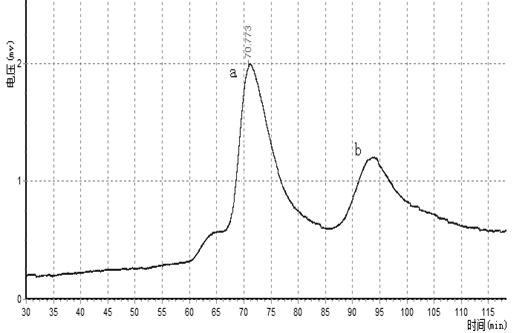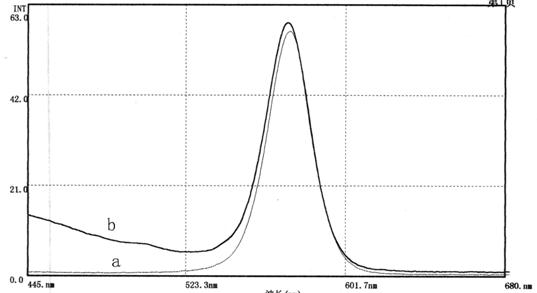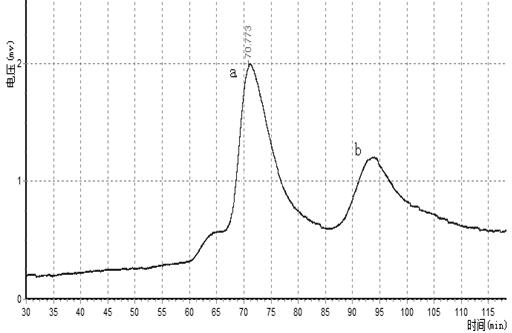Method for quantitatively detecting allergen alpha-lactalbumin based on quantum dot fluorescence
A technology for fluorescent quantitative detection and lactalbumin, which is applied in the field of food analysis, achieves good promotion and application prospects, is convenient for high-throughput analysis and detection, and has high sensitivity
- Summary
- Abstract
- Description
- Claims
- Application Information
AI Technical Summary
Problems solved by technology
Method used
Image
Examples
Embodiment 1
[0027] Example 1: Quantitative detection of the allergen α-lactalbumin in Youlemei milk tea.
[0028] 1. Sample pretreatment.
[0029] Weigh Youlemei milk tea instant powder and dissolve it with phosphate buffer to make a 100 mg / mL solution, vortex to mix, centrifuge to remove precipitation, take the supernatant and dilute 100 times with phosphate buffer as the test sample.
[0030] 2. Sample testing.
[0031] (1) Dilute the antigen protein with the coating solution to the optimal coating concentration of 1μg / ml, then add it to the microplate with 100 μL per well, and coat overnight at 4°C.
[0032] (2) Washing: Wash three times with PBST, 5 minutes each time, and dry.
[0033] (3) Blocking: Use 1% gelatin to block the microwells that are not coated with antigen protein, 250 μL per well, and incubate at 37°C for 1 h. After the coating is finished, take it out and wash it with PBST three times, then buckle dry, 5 min each time.
[0034] (4) Competitive reaction: mix the competing antigen ...
Embodiment 2
[0039] Example 2: Quantitative detection of the allergen α-lactalbumin in Mengniu pure milk.
[0040] 1. Sample pretreatment.
[0041] Take 1 mL of commercially-available Mengniu pure milk in a centrifuge tube, use a low-temperature refrigerated centrifuge at 8000 rpm, 4°C for 10 min to remove the fat layer, and take a sample diluted 100 times with phosphate buffer as the test sample.
[0042] 2. Sample testing.
[0043] (1) Dilute the antigen protein with the coating solution to the optimal coating concentration of 1μg / mL, then add it to the microtiter plate, 100 μL per well, and coat overnight at 4°C.
[0044] (2) Washing: Wash three times with PBST, 5 minutes each time, and dry.
[0045] (3) Blocking: Use 1% gelatin to block the microwells not coated with antigen protein, 250μL per well, and incubate at 37°C for 1h. After the coating is finished, take it out and wash it with PBST three times and then buckle dry for 5 minutes each time.
[0046] (4) Competitive reaction: Mix the compet...
PUM
| Property | Measurement | Unit |
|---|---|---|
| diameter | aaaaa | aaaaa |
Abstract
Description
Claims
Application Information
 Login to View More
Login to View More - R&D
- Intellectual Property
- Life Sciences
- Materials
- Tech Scout
- Unparalleled Data Quality
- Higher Quality Content
- 60% Fewer Hallucinations
Browse by: Latest US Patents, China's latest patents, Technical Efficacy Thesaurus, Application Domain, Technology Topic, Popular Technical Reports.
© 2025 PatSnap. All rights reserved.Legal|Privacy policy|Modern Slavery Act Transparency Statement|Sitemap|About US| Contact US: help@patsnap.com



